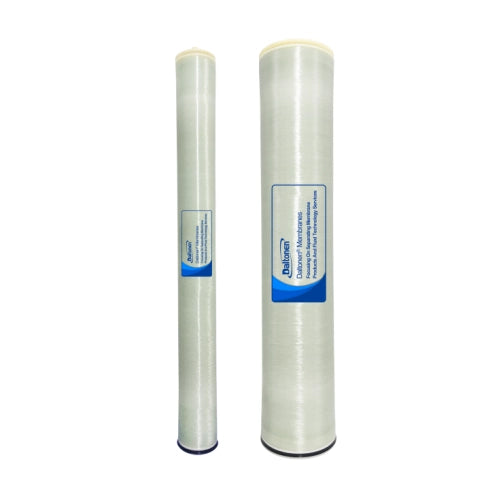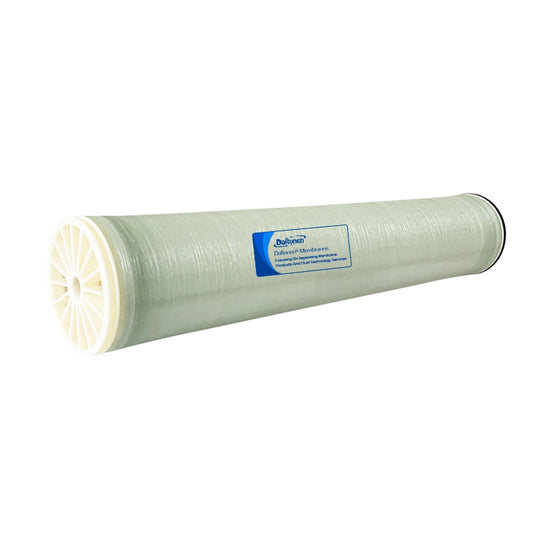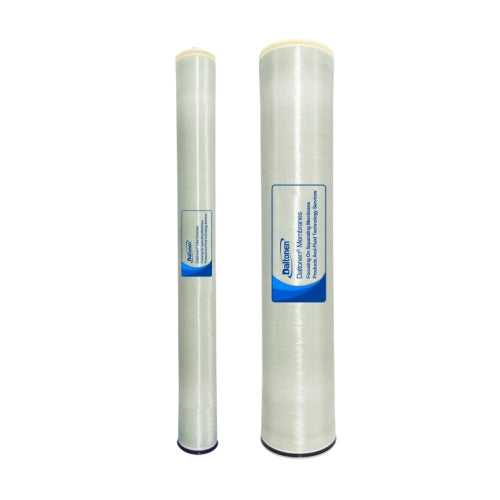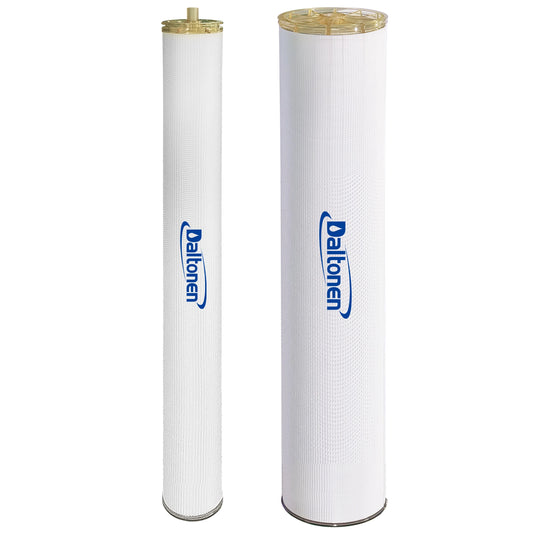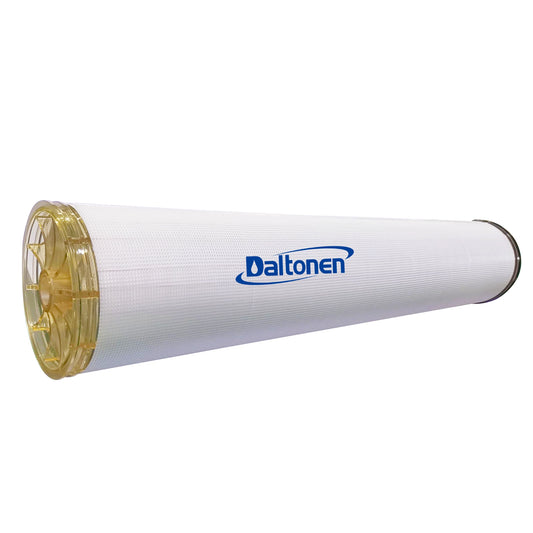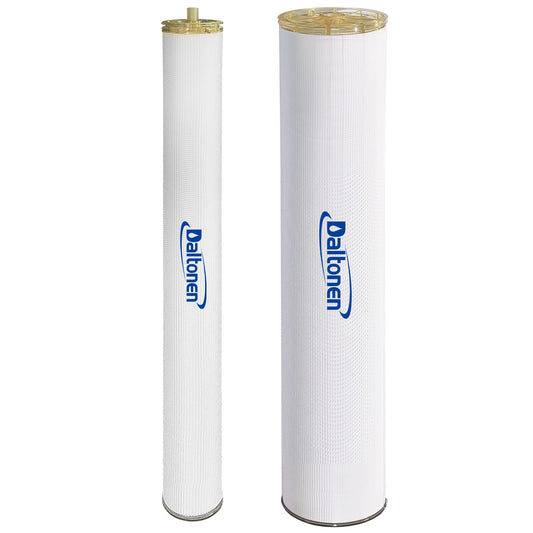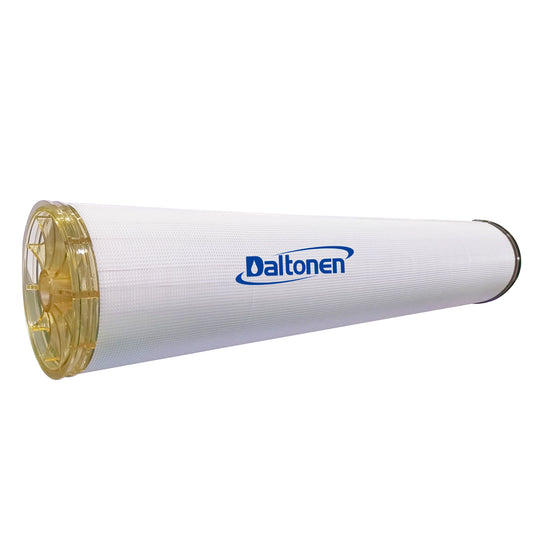Design and Scheme of Ultra-Pure Water System Reverse Osmosis Membrane Process
03 Jun 2025
Ultra-pure water (resistivity ≥ 18.2 MΩ·cm, TOC ≤ 5 ppb) is widely used in semiconductor, pharmaceutical, laboratory, and other fields. Reverse osmosis (RO) serves as the core pre-treatment unit, which needs to efficiently remove more than 99% of ions, organic matter, and microorganisms to provide stable feed water for subsequent fine treatment (such as EDI, mixed bed). The following is the process design and scheme of the ultra-pure water system based on RO membrane:
I. Process Design
-
Pre-treatment Stage: Water Purification and Membrane Protection
-
Multi-media Filtration: Three-stage filtration with quartz sand + activated carbon + softening resin to remove suspended solids (SDI ≤ 3), residual chlorine (≤ 0.1 ppm), and hardness (Ca²⁺ + Mg²⁺ ≤ 1 ppm).
-
Precision Filtration: 1μm polypropylene filter element (double-stage redundancy) intercepts colloids and particulate matter to ensure RO feed water SDI ≤ 1.
-
Scale Inhibitor Addition: Addition of 0.5-1.0 ppm non-phosphorus scale inhibitor (such as polyacrylic acid) to prevent CaCO₃ and SiO₂ scaling on the RO membrane surface.

-
Reverse Osmosis Membrane Desalination Stage
-
Membrane System Selection: High desalination rate RO membrane: Select polyamide composite membrane (such as DOW Filmtec™ BW30HR-440i), with a single membrane desalination rate of ≥ 99.7%, and can withstand pH 2-11 chemical cleaning.
-
Two-stage RO Configuration (Recommended): First-stage RO: Desalination rate ≥ 99%, product water conductivity ≤ 5μS/cm; Second-stage RO: Feed water is the product water of the first stage, desalination rate ≥ 99.5%, product water conductivity ≤ 0.1μS/cm.
-
Operating Parameters: Pressure: First-stage RO 1.2-1.8MPa, second-stage RO 0.8-1.2MPa (operate at reduced pressure when salt content is low). Recovery rate: First-stage 75%-80%, second-stage 85%-90% (total system recovery rate 60%-70%). Temperature: 15-25℃ (equipped with plate heat exchanger to maintain constant temperature, avoiding temperature fluctuations affecting desalination rate).
-
Pollution Control: Online flushing: Every 4 hours of operation, perform 2 minutes of low-pressure flushing (0.3MPa) to discharge the concentration polarization layer on the membrane surface. Frequency conversion control: High-pressure pump frequency conversion speed regulation, matching water quality fluctuations, reducing membrane pressure difference (ΔP ≤ 0.5MPa).
-
Post-treatment and Refining
-
EDI Electrodialysis: The product water of the second-stage RO passes through the EDI module (such as GE EDI 2020), desalinated to a resistivity of ≥ 15 MΩ·cm, TOC ≤ 10ppb.
-
Polishing Mixed Bed: Nuclear-grade mixed bed resin (such as Purolite™ NRW-1600H/OH) further purifies the water, with product water resistivity ≥ 18.2 MΩ·cm.
-
Terminal Filtration: 0.2μm ultrafiltration membrane or terminal sterilizing filter element (PES material), retains particles and microorganisms ≥ 0.2μm.
-
System Monitoring and Circulation
-
Closed-loop Circulation: The ultra-pure water circulation pipeline uses 316L stainless steel (electropolished), maintaining a flow rate of ≥ 2m/s to inhibit microbial growth.
-
Online Monitoring: Resistivity meter (0.01-20 MΩ·cm), TOC analyzer (0.1-500ppb), laser particle counter (≥ 0.1μm).
II. Core Equipment Configuration
Module
Equipment and Parameters
Pre-treatment Unit
Multi-media filter (automatic backwash), softening resin tank, activated carbon adsorption tower, scale inhibitor dosing pump
RO Membrane System
First-stage RO membrane (BW30HR-440i), second-stage RO membrane (XLE-440), high-pressure pump (Grundfos CRN series)
Fine Treatment Unit
EDI module (flow rate 10m³/h), nuclear-grade mixed bed, terminal ultrafiltration device (0.2μm)
Monitoring and Circulation
Online water quality analyzer (Mettler Toledo), circulation pump (frequency conversion), nitrogen-sealed water tank (316L material)
III. Key Performance Indicators
Process Section
Conductivity (μS/cm)
TOC (ppb)
Microorganisms (CFU/mL)
Raw water
500-2000
100-500
≤100
First-stage RO product water
≤5
≤50
≤1
Second-stage RO product water
≤0.1
≤20
≤0.1
EDI product water
≤0.055 (≥18 MΩ·cm)
≤10
≤0.1
Polishing mixed bed product water
≤0.055 (≥18.2 MΩ·cm)
≤5
≤0.1

IV. Technical Advantages
Ultra-high desalination rate: Two-stage RO + EDI + mixed bed process, total desalination rate ≥ 99.9999%, meeting the requirements for semiconductor wafer rinsing.
Low fouling design: Fully automatic backwashing, frequency conversion control, and online flushing functions, RO membrane life ≥ 5 years (flux decay rate ≤ 5%/year).
Zero dead-end circulation: 316L stainless steel piping + high flow rate design to avoid microbial growth in stagnant water areas.
Intelligent monitoring: HMI human-machine interface displays water quality parameters in real-time, with abnormal alarms and interlocked shutdown to ensure water quality stability.
V. Operation and Maintenance Key Points
Membrane Cleaning Strategy:
Organic fouling: 0.1% NaOH + 0.05% EDTA solution, circulated for 1 hour at 45℃ (every 3-6 months).
Inorganic scaling: 1% citric acid solution, circulated for 30 minutes at room temperature (every 6-12 months).
Resin Regeneration:
Mixed bed resin regeneration cycle: When the product water resistivity < 18 MΩ·cm, regeneration is needed with ultra-pure water + electronic-grade acids and bases.
Microbial Control:
Monthly circulation disinfection of the pipeline system with 3% hydrogen peroxide or ozone water (0.1ppm).
VI. Economic Benefit Analysis
Investment Cost:
10m³/h system (including RO + EDI + mixed bed) is approximately ¥5-8 million (varies greatly depending on water quality grade).
Operating Cost:
Energy consumption: ¥1.2-1.8/m³ (including circulation pump, EDI); consumables: ¥0.5-1.0/m³ (membrane, resin replacement).
Water-saving Benefit:
Recovery rate ≥ 75%, saving 30% water compared to single-stage RO, and concentrate can be reused for cooling towers or pre-treatment backwash.
VII. Application Cases
12-inch wafer plant ultra-pure water system:
Raw water conductivity 1500μS/cm, after two-stage RO + EDI + 0.2μm terminal filtration, product water resistivity 18.25 MΩ·cm, TOC ≤ 3ppb.
Biopharmaceutical injection water:
RO product water (conductivity ≤ 2μS/cm) meets WFI standard after multi-effect distillation (MED), replacing traditional distillation process.
Tags:
